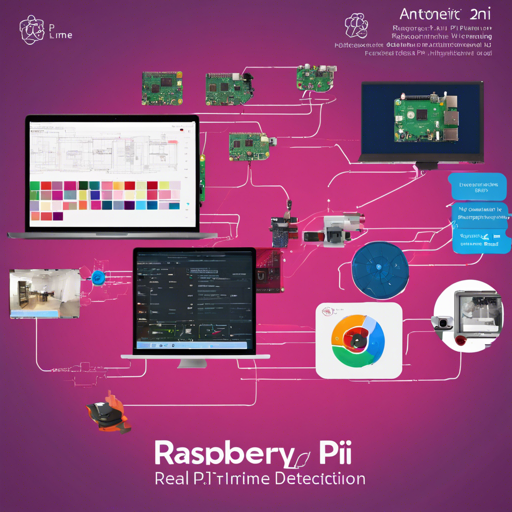Welcome to the world of computer vision! In this article, we’ll delve into the fascinating realm of real-time object detection and tracking using the Raspberry Pi, a compact and powerful device that brings your projects to life with intelligent visual capabilities.
1. Introduction
This project employs a Raspberry Pi and a camera module, utilizing OpenCV and TensorFlow Lite for dynamic computer vision applications. With this setup, you can elevate your maker projects, allowing them to detect and track objects based on various features. Whether it’s summoning an object based on color or detecting faces, the possibilities are immense.
2. Dependency
2.1. Packages Requirement
The following packages are essential for the successful implementation of this project:
- Python = 3.5
- OpenCV-Python
- OpenCV-Contrib-Python
- NumPy
- SciPy
- Matplotlib
- TensorFlow Lite (optional)
2.2. Hardware Support
This project supports a variety of Raspberry Pi models, including:
- Raspberry Pi 1 Model B
- Raspberry Pi 2
- Raspberry Pi Zero
- Raspberry Pi 3/4 (preferred for better performance)
Any USB camera compatible with the Raspberry Pi can also be utilized. Check the list of supported USB cameras. Note that while the official camera module is not yet supported, modifications can be made to enable its use.
3. What’s in this Repository
This repository contains various applications, including:
- Camera Test: Check if the camera is functioning correctly.
- Motion Detection: Detects movement within the frame.
- Color-Based Object Detection: Tracks objects based on color.
- Shape-Based Object Detection: Detections based on shape analysis.
- Feature-Based Object Detection (with ORB): Utilizes ORB for object tracking.
- Face Detection and Tracking: Detects human faces.
- Object Detection using Neural Network (TensorFlow Lite): Ongoing development.
4. How to Run
4.1. Install the Environment on Raspberry Pi
To set up your environment on the Raspberry Pi, execute the following commands:
sudo apt-get install libopencv-dev
sudo apt-get install libatlas-base-dev
pip3 install virtualenv Pillow numpy scipy matplotlib
pip3 install opencv-python opencv-contrib-python4.2. Install TensorFlow Lite (optional)
If you wish to utilize the neural network example, follow these steps:
wget https://github.com/PINTO0309/Tensorflow-bin/raw/master/tensorflow-2.1.0-cp37-cp37m-linux_armv7l.whl
pip3 install --upgrade setuptools
pip3 install tensorflow-2.1.0-cp37-cp37m-linux_armv7l.whl
pip3 install -e .4.3. Run the Scripts
To run the desired scripts, navigate to the src folder, then execute:
python3 src/$FOLDER_NAME$/$SCRIPT_NAME$.pyPress the ESC key to stop the execution.
4.4. Change Camera Resolution
Camera resolution directly impacts frames per second (FPS). Default resolution is set to 320 x 240, but it can be modified at the start of the source code. Typical resolutions include:
- 160 x 120
- 320 x 240
- 640 x 480 (480p)
- 1280 x 720 (720p)
- 1920 x 1080 (1080p; ensure camera supports this resolution)
5. Troubleshooting
If you encounter any issues, consider the following troubleshooting steps:
- Ensure all packages are installed correctly and compatible with your Raspberry Pi version.
- Check camera connectivity and compatibility.
- Verify that the correct resolutions are set within the code.
- Test the camera functionality independently if the video stream is not appearing.
For additional support and insights, For more insights, updates, or to collaborate on AI development projects, stay connected with fxis.ai.
Conclusion
At fxis.ai, we believe that such advancements are crucial for the future of AI, as they enable more comprehensive and effective solutions. Our team is continually exploring new methodologies to push the envelope in artificial intelligence, ensuring that our clients benefit from the latest technological innovations.

